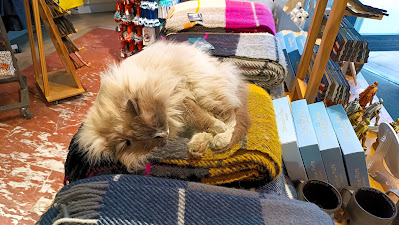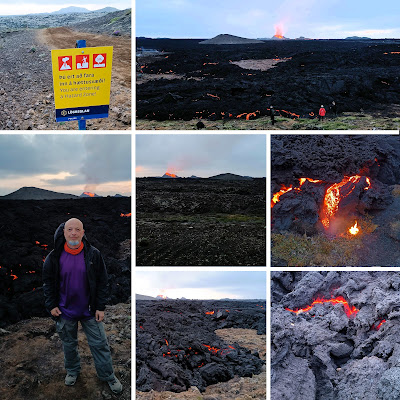Summer concerts in Sólheimar
If you are in the area in summer, I can recommend to go to concerts in Sólheimar on Saturdays, about a half hour drive from Selfoss.
Here in the eco-village of Sólheimar, a cultural festival, various concerts take place every week during the summer, usually from early/mid-June to early/mid-August, always on Saturdays at 2 p.m. The concerts usually last about 45 minutes, which isn't long, but I think if you're offered a free concert, you can't complain.
The offerings are – typically Icelandic – incredibly diverse, from pop singers, opera singers, entertainers, several tenors, to a 70s cover band; it feels like everything is there, and the great thing is, the audience is just as diverse. Perhaps that's because there aren't that many options here in the countryside, and when something is offered, people go and enjoy it; the style of music is secondary.
On Saturday (July 12th) we went to a concert in Sólheimar. We were meeting up with friends there. Last year, we had been there on a concert of Páll Óskar; this time we went to a Friðrik Dór performance.
The concerts usually take place in the Sólheimar Church. The church was consecrated by the then Evangelical Lutheran Bishop of Iceland from 2002 to 2005, with a solemn service in July 2005. The church is owned by Sólheimar, and its construction was financed entirely through monetary and in-kind donations within the framework of the foundation. The church seats 194 people.
This time, however, we found ourselves standing in front of closed doors at the church. There was a sign hanging in the glass door announcing that due to the good weather, the concert was being held outdoors, on Péturstorg square in the middle of the village, next to the café and shop. Many visitors grabbed cake, coffee, ice cream, etc. from the café and made themselves comfortable in the square. Since it quickly filled up, many also sat on the lawn in the sunshine - how often do you get to do that in Iceland...?!?
This Saturday Friðrik Dór performed.
Friðrik Dór Jónsson (born 1988 in Hafnarfjörður) is one of the best-known Icelandic singers and songwriters.
Many of his songs are popular songs here, not least his remake of "Fröken Reykjavík". The lyrics and melody of the song, presumably from the 1950s, about "Miss Reykjavík," who runs along Austurstræti in her red shoes, smelling of spring flowers and attracting everyone's attention, were originally written by the brothers Jónas and Jón Múli Árnason and were very well-known and popular in Iceland. Friðrik Dór's remake of the song was released in 2016, with the same lyrics but a different melody than the original.
Friðrik Dór also sang "Fröken Reykjavík" at his concert in Sólheimar. And the audience sang along enthusiastically, with admirable confidence in both the lyrics and the melody - from the elderly lady over 80 to the 20-year-old granddaughter.
Overall, the concert was really enjoyable. Friðrik Dór created a wonderful, upbeat atmosphere and carried the audience along, and the audience enthusiastically joined in, clapping and singing along. And I'm continually impressed by how well Icelanders can sing. An all-around wonderful experience!
This is an excerpt from a video of the concert that Sólheimar shared afterward on his website and social media. Can you find us? We're sitting on the far left, and my husband is also filming or taking a photo.
After the concert, we went home and ate cake and had a barbecue with friends and spent a cozy evening.
PS: Friðrik Dór is also a member of the IceGuys
Friðrik Dór's older brother, Jón Ragnar Jónsson (born 1985), is also a well-known Icelandic singer and former football player. Jón Jónsson founded the Icelandic boy band Iceguys in 2023. Members of the pop band, besides Jón Jónsson and his brother Friðrik Dór, are Aron Can and Árni Páll Árnason (known as a rapper under the moniker "Herra Hnetusmjör", meaning "Mr. Peanut Butter").
The fifth member of the group is Rúrik Gíslason, also and especially well known in Germany as a handsome ex-football player in the 2nd Bundesliga for 1. FC Nuremberg and SV Sandhausen, former Icelandic international and, of course, as the winner of Let's Dance 2021.
 |
| Source: mbl.is |
It's said that while the other four band members quickly embraced the Iceguys, Rúrik was initially very reserved. Jón Jónsson was only able to convince him by convincing director and former national goalkeeper Hannes Þór Halldórsson to shoot the band's first video.
The IceGuys are very popular in Iceland; there's even a TV series called IceGuys, which is entering its third season this year. Hannes Þór Halldórsson is also involved in the series again.

























































